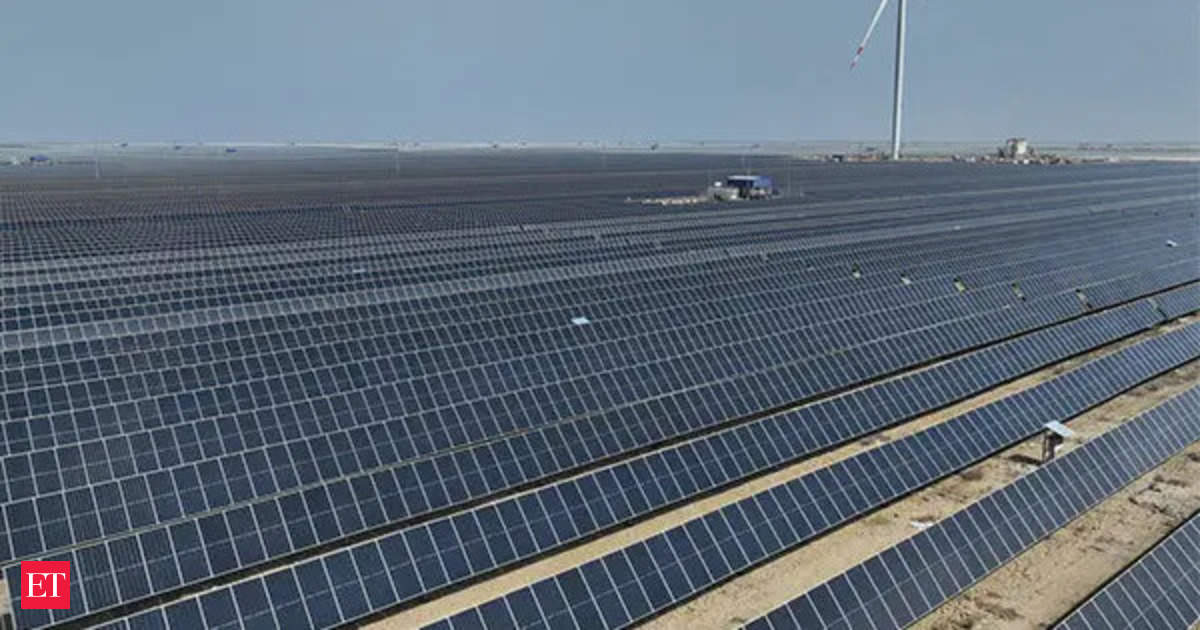As one of the world’s fastest-growing economies and with a rapidly expanding population, India faces the combined challenge of meeting rising energy consumption while simultaneously reducing carbon emissions. Renewable energy represents the most viable solution to balance these factors.
Despite having one of the lowest per capita emissions in the world, India is not only championing the cause of clean energy under Prime Minister Narendra Modibut also inspire other nations to join the cause.
India’s determination to fight climate change It was emphasized in his announcement in COP26 In Glasgow, the Prime Minister set out five key targets under the Panchamrit initiative, of which renewable energy is a key component. The country has committed to achieving 500 GW of non-fossil fuel-based energy capacity by 2030 and to meeting 50% of its energy needs with renewables by the same year. solar energy Wind power accounts for 58% and wind energy for about 20%. These targets align with India’s broader goal of reducing its projected carbon emissions by 1 billion tonnes and decreasing the carbon intensity of its economy by 45% by 2030.
The Prime Minister’s special focus has helped India rank fourth globally in renewable energy installed capacity, fourth in wind power installed capacity and fifth in solar capacity.
In solar capacity
In 2014, India had a solar capacity of just 2.5 GW, which has grown more than 30-fold in just 10 years to reach 89 GW today. Even as far as installed wind power capacity is concerned, it has grown 2.2-fold in 10 years from 21 GW to 47 GW. As for affordability, there has been a 76% reduction in tariffs for grid-connected solar power plants from Rs 10.95 in 2010-11 to Rs 2.60 in 2023-24.
India has also implemented programs like the PLI scheme to increase domestic production of solar modules and minimize dependence on imports. In addition, strategic interventions to Green hydrogen The Energy Transition Program (SIGHT) offers incentives for the manufacturing of electrolysers and the production of green hydrogen.
When it comes to adoption Infrastructure for electric vehicles In the country, the Prime Minister is keen on paving the way for using only renewable sources to charge electric vehicles in the future, without resorting to fossil fuel energy sources. The PM Surya Ghar Yojana scheme can also play a role in this regard as citizens can use solar rooftops to power their vehicles.
The Ministry of New and Renewable Energy will host the RE-Invest 2024 renewable energy investors meet and exhibition in Gandhinagar from September 16-18, which will be inaugurated by Prime Minister Modi. The aim is to exchange learnings of best practices in the sector and forge new partnerships as we move towards achieving 500 GW of installed renewable energy capacity by 2030. Participants will be from Germany, Denmark, Australia, Norway and the UAE. The event will also see participation from various state governments, banks, financial institutions, investors and private players who will give their commitments in the form of Shapath-Patra, specifying their plans/targets for the renewable energy sector.
The government is promoting the use of renewable energy through renewable energy purchase obligations and renewable generation obligations. These mandates fit into the national vision of moving towards green growth and compliance with the obligations allows individual entities to move forward on the path of energy transition.
The plan is to tender at least 50 GW of capacity each year. SECI, PCNT, NHPC and SJVN have been notified by the government as Renewable Energy Implementing Agencies (REIAs) to invite bids for solar, wind, solar-wind hybrid energy (RTC RE, 24-hour renewable energy), etc.
Foreign financial institutions and climate funds are providing significant support to India’s transformation towards renewable energy. According to estimates, India will need investments worth around Rs 30 trillion to achieve its renewable and non-fossil energy target of 500 GW by 2030.
India’s path to renewable energy is supported by strong policies and international partnerships. Initiatives such as the International Solar Alliance (ISA), co-founded by India and France, seeks to promote the use of solar energy worldwide, particularly in developing countries. The transition to a renewable energy-based economy will have significant socio-economic benefits for India. In addition, renewable energy projects, particularly in rural regions, can create jobs and stimulate local economic growth. Renewables are particularly important in solving public health problems related to air pollution, which is a problem in many cities.
While challenges remain, continued policy support, technological innovation and global cooperation will be key to realizing India’s vision of a net-zero emissions future by 2070. As the world’s largest democracy and a rapidly developing nation, India’s journey to renewable energy will serve as a model for other emerging economies on the path to sustainability.
Disclaimer:
The information contained in this post is for general information purposes only. We make no representations or warranties of any kind, express or implied, about the completeness, accuracy, reliability, suitability or availability with respect to the website or the information, products, services, or related graphics contained on the post for any purpose.
We respect the intellectual property rights of content creators. If you are the owner of any material featured on our website and have concerns about its use, please contact us. We are committed to addressing any copyright issues promptly and will remove any material within 2 days of receiving a request from the rightful owner.

